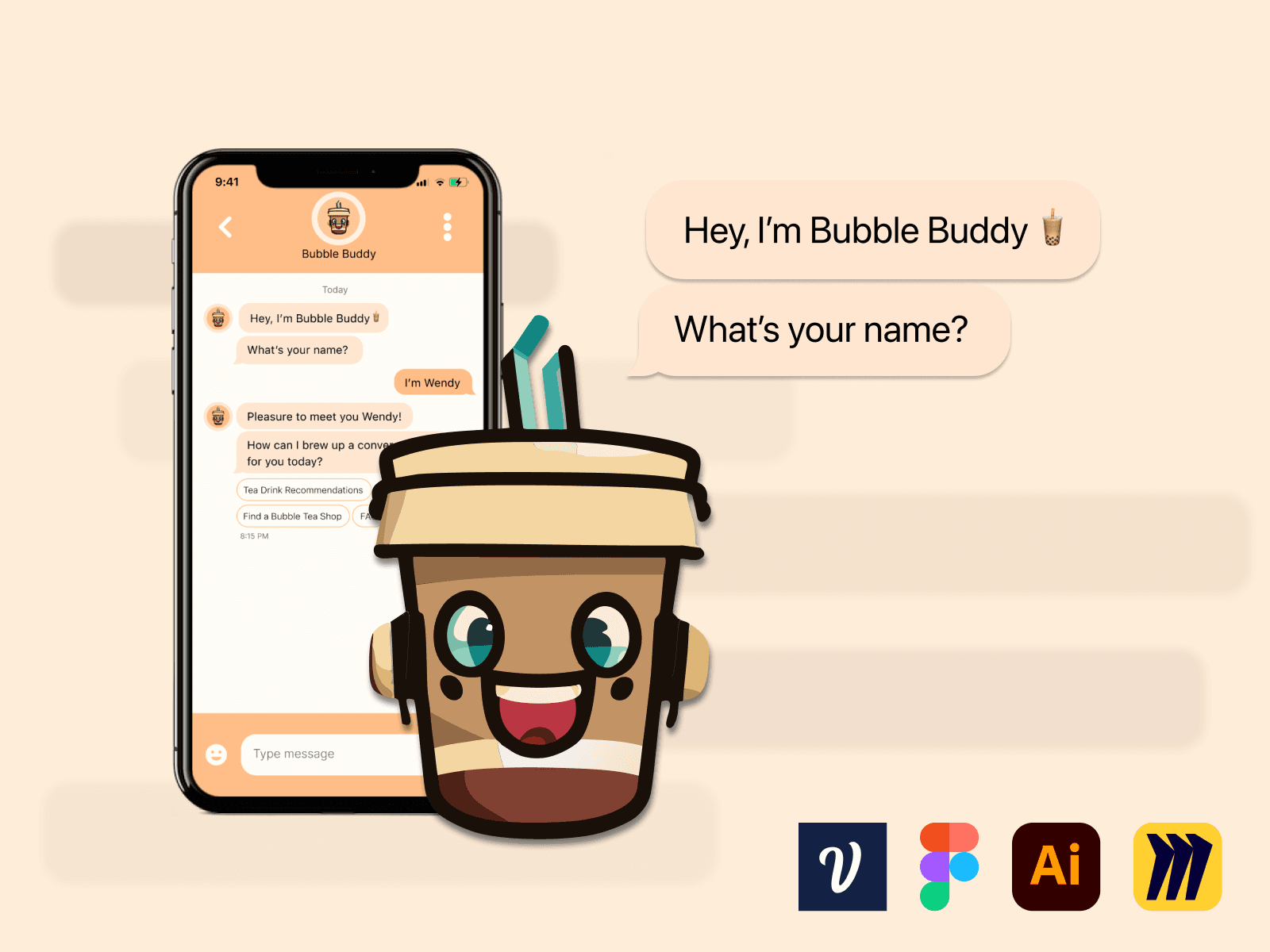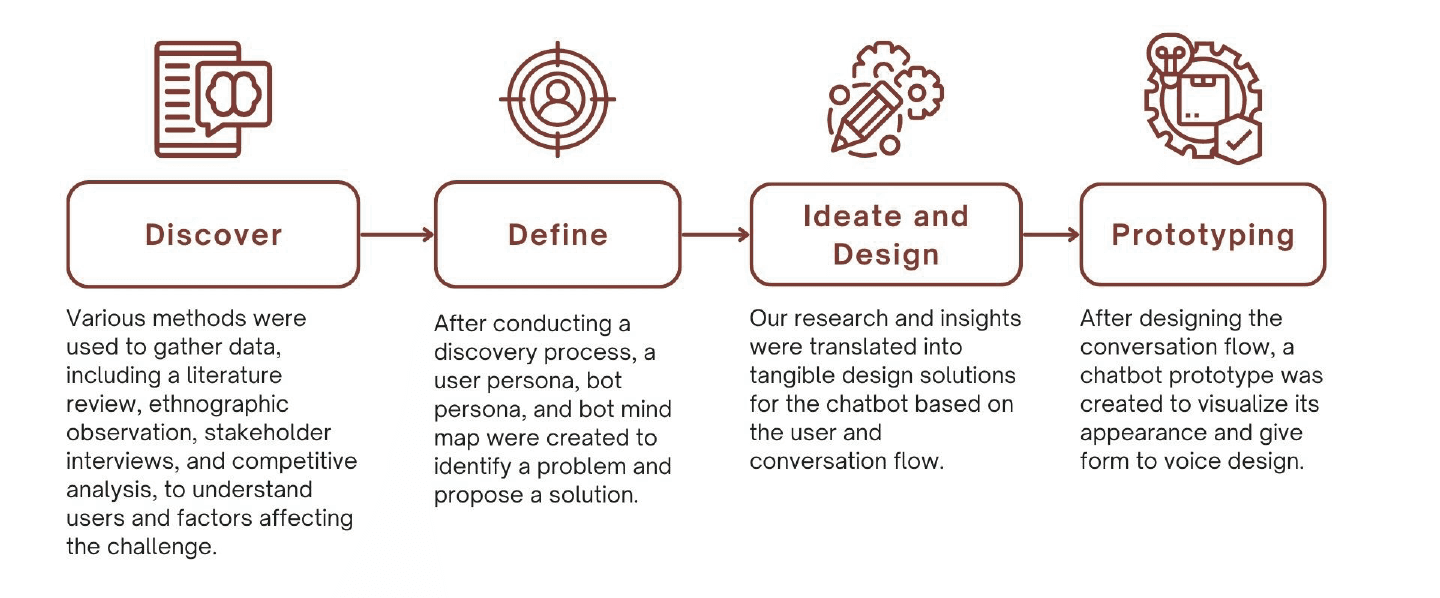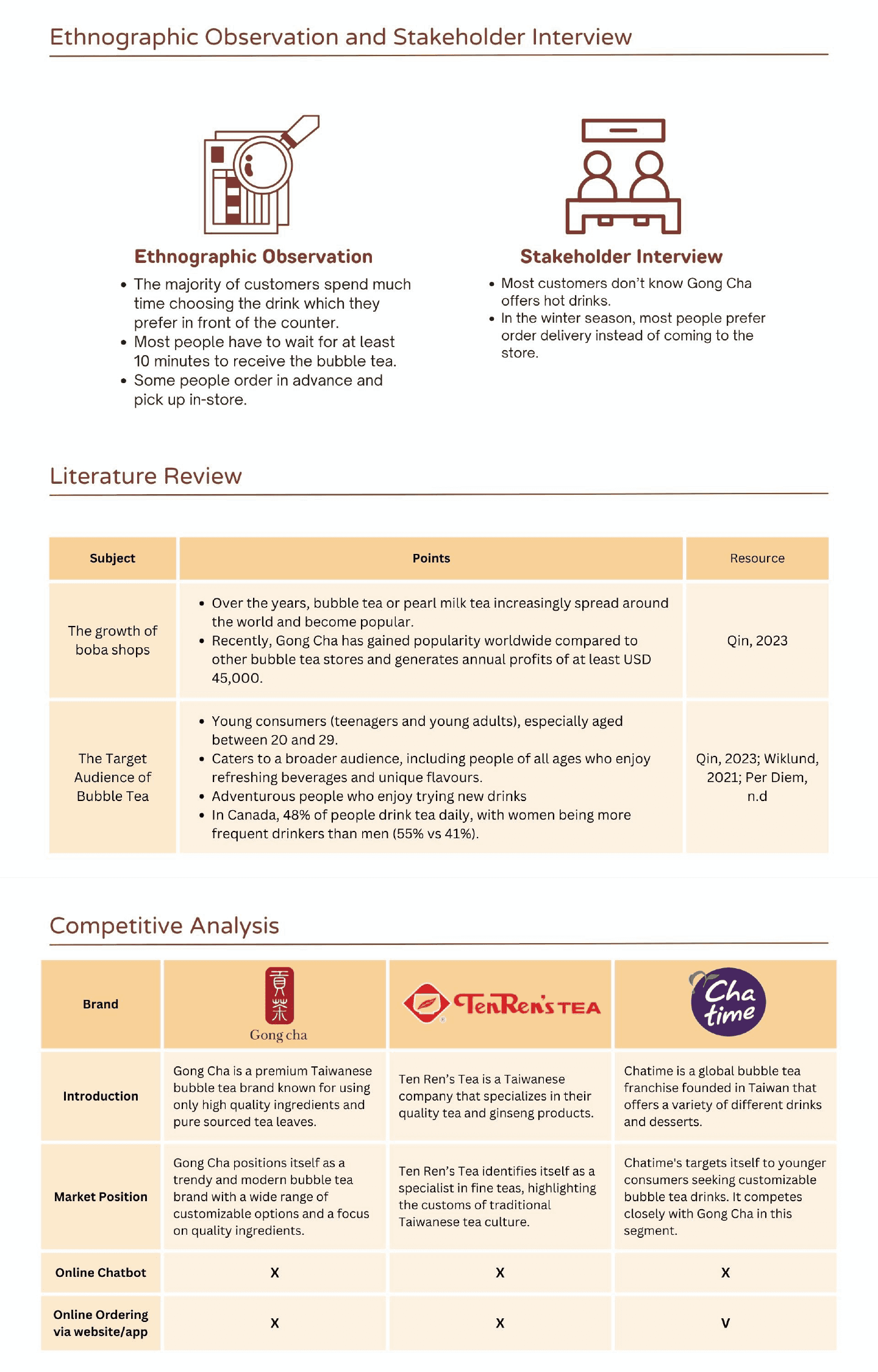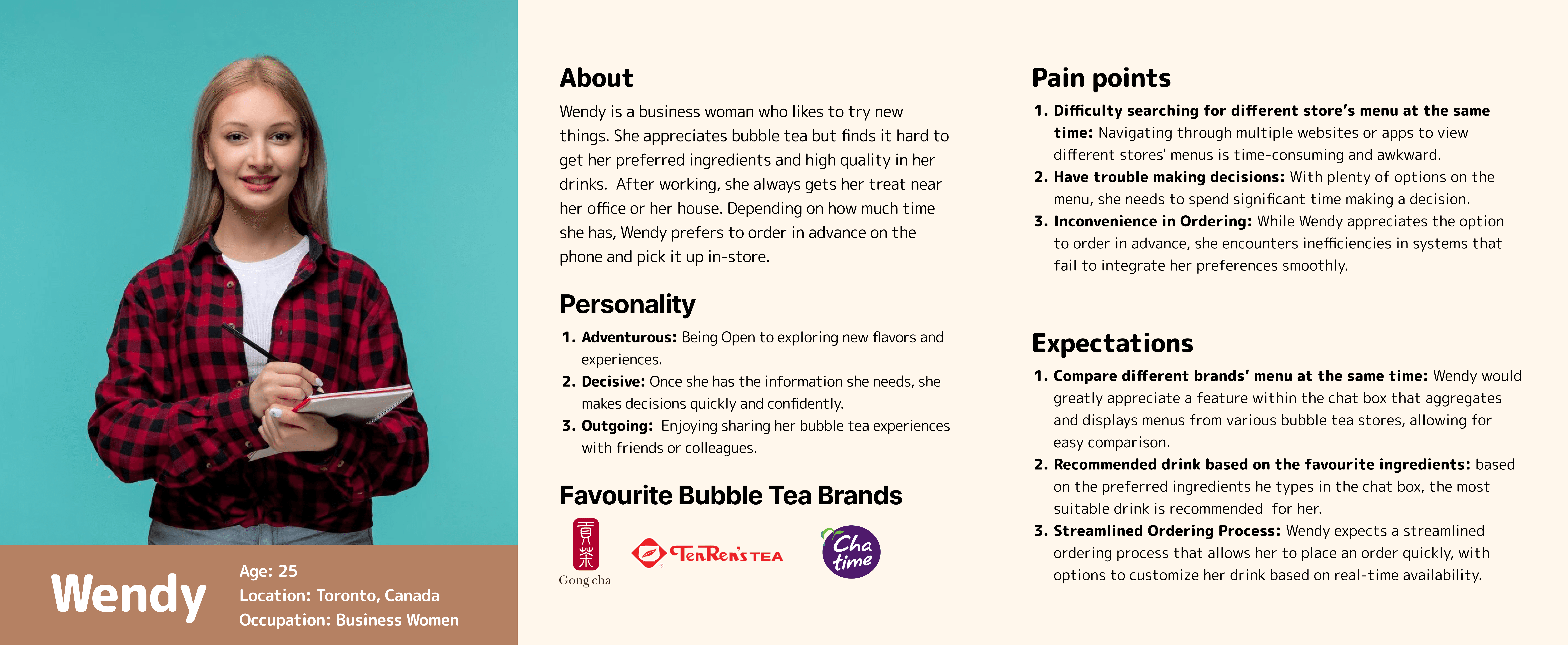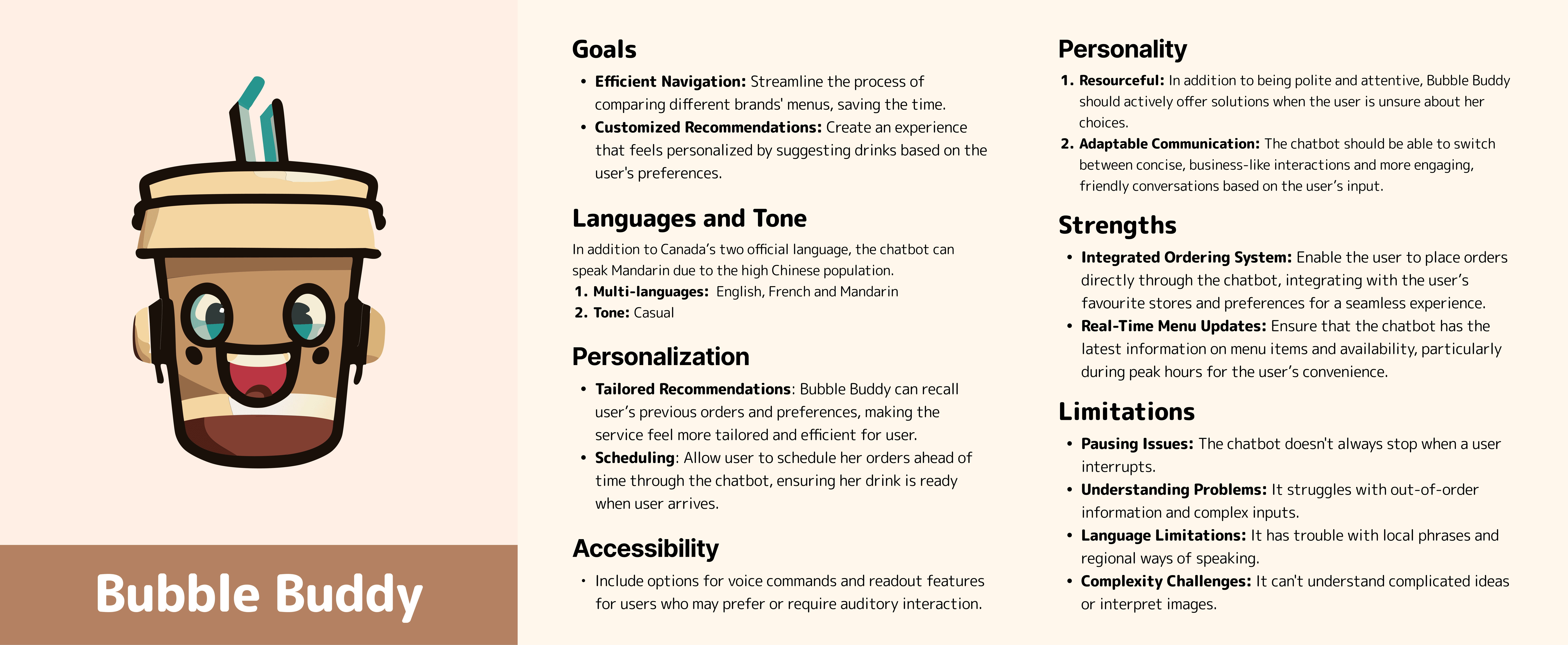UX Research & Conversational User Interface
Problem Statement
Rising Demand for Personalization: The increasing need for tailored bubble tea experiences highlights a growing trend among consumers.
Decision-Making Challenges: Bubble tea enthusiasts face decidophobia due to the overwhelming variety of flavours and options available.
Navigation and Location Issues: Users struggle to find and choose from the multitude of bubble tea offerings, particularly when trying to locate nearby shops that serve their preferred drinks.
HMW Statement
Methodology
Discover
Employed methods such as literature review, ethnographic observation, and interviews to gather insights about user needs and challenges.
Define
Created a user persona and bot mind map during the discovery process to clearly identify problems and propose tailored solutions.
Ideate and Design
Transformed research findings into practical design solutions for a chatbot, focusing on user-centric conversation flows.
Prototyping
Developed a chatbot prototype to refine its visual interface and interaction, extending from visual design to voice integration.
Research Takeaways
Informed Design Process: Having stakeholder interviews and secondary data collection early on ensured that decisions were made with a full understanding of user needs, shaping the conversation flow effectively.
Persona Development: The insights gathered provided a solid foundation for the creation of precise user and chatbot personas, essential for a user-centric design.
User Persona and Bot Persona
Bot Mind Map
This mind map outlines the features of a chatbot for a bubble tea service, including Ordering Assistance, Drink Recommendations, Shop Finder, FAQ, and Order Tracking.
User Flow
The diagram depicts a decision-based user flow for ordering a tea drink, with options to customize the order and choose payment methods leading to confirmation.
Conversational Flow
The diagram illustrates a chatbot’s conversation flow, detailing user interactions for finding and ordering a tea drink, including FAQs and payment confirmation.
Voice Flow
The voice flow covers three different functions: Recommendation flow, Shop Finder Flow, and FAQ.
Prototyping
Recommendation Flow
Shop Finder Flow
Usability Testing and Recommendations
After finalizing our initial design, we carried out usability tests to evaluate the chatbot's functionality. This process helped us identify any issues users might face while interacting with the chatbot, ensuring that it not only performs its intended tasks effectively but also delivers a user-friendly experience. The recommendations from 3 participants are below.Complex navigation or unclear user flow.
Flexible Recommendations: Ensure that users are presented with at least two alternative options if the initial recommendation does not meet their preference.
Proactive Engagement: After the order, the chatbot should prompt users with "Anything else I can help you with?" to encourage further interaction or additional orders.
Expanded Selections: Allow users to select multiple toppings in one go, offering a more efficient and personalized ordering experience.
Post-Order Engagement: After the order is placed, consider adding a step where the chatbot informs the user of the estimated time until the order is ready and provides options for assistance or additional orders.
Error Handling and Help: At each step, there should be an option to ask for help or receive guidance if the user is confused or makes an error.
Learnings
Human-AI Interaction Comprehension:Understanding the dynamics between AI and human interaction is crucial, especially in recognizing the subtleties and complexities of human communication that AI must navigate.
Voice Flow Challenges:Experience with voice flow has highlighted the importance of designing for misinterpretation—anticipating the diverse ways humans express themselves and preparing the bot to understand various phrases and contexts.
Terminology Versatility:Recognizing that users have different ways of referring to the same item, such as "pearl milk tea" and "bubble tea," underscores the need for a flexible term recognition system within the AI to cater to diverse user inputs.
Conversational Synonyms:Crafting a chatbot requires programming synonymous phrases—ensuring that different expressions carrying the same intent, like "Can I have a bubble tea" and "I would like to order a bubble tea," are understood uniformly by the system.
